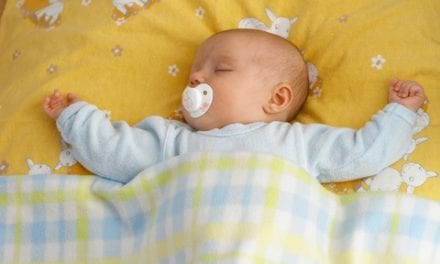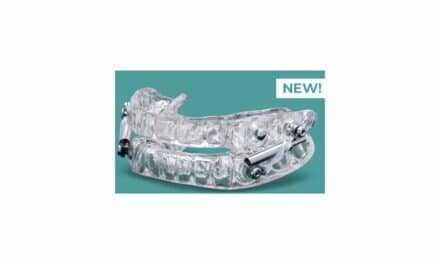 |
A multidisciplinary approach to treating hydrocephalus and ADHD compounded by sleep-disordered breathing.
By Henry L. Johns, BS, RPSGT, CRT, CPFT
It is a well-known fact that children and adolescents with sleep disorders can be a challenge to treat. At times, young patients’ symptoms are compounded by contributing conditions, and it is necessary to think outside the box to find solutions to the problems faced by patients and their families. Such was the case with “Adam,” a patient presenting with hydrocephalus and ADHD compounded by sleep-disordered breathing.
Background
Hydrocephalus
When sleep disorders are present in patients with hydrocephalus, commonly referred to as “water on the brain,” intracranial pressures can be significantly increased during apneic periods, causing increased severity of symptoms. Excessive pressure can cause progressive mental impairment and dementia. Other symptoms include sleepiness, irritability, downward deviation of the eyes (sunsetting), and seizures. It is often necessary to surgically implant a shunt to allow for fluid drainage.
ADHD
ADHD symptoms appear over a period of months and may include impulsiveness and hyperactivity preceding symptoms of inattention. This results in the child having a lack of self-control and sometimes disruptive behavior, and being inattentive to their surroundings. This hyperactivity, distractibility, poor concentration, or impulsivity affects scholastic performance and social relationships at both home and school.
Sleep-Disordered Breathing
Sleep-disordered breathing (SDB), which consists of obstructive sleep apnea (OSA), hypopnea, upper airway resistance syndrome (UARS), and respiratory event-related arousals (RERAs), as defined by the International Classification of Sleep Disorders-2nd Edition (ICSD-2), have been noted in both hydrocephalus and ADHD. When appearing in patients with hydrocephalus, the intracranial pressures may be significantly increased, causing increased pressure on the brain.1 It has also been reported that the condition of shunted patients suffering headaches improved when SDB was treated with nasal CPAP.2 The American Academy of Pediatrics recommended that children with symptoms of ADHD be tested and treated for SDB.
Case Review
For the purpose of this report, to protect the privacy of the patient, he shall be referred to as “Adam.” He was a patient at Pulmonary & Sleep Associates of Topeka, Kansas, a multiphysician practice with its own sleep center that is fully accredited by the American Academy of Sleep Medicine (AASM).
Adam was accompanied to the clinic by his mother. He was 17 years old at the time of his first clinic visit in September 2006 and was living at home with his mother. Adam was visibly withdrawn and had a stoop-shouldered posture, with his arms crossed over his chest and a bowed head. He was 71 inches tall and weighed 192 pounds with a BMI of 26.9. His vital signs were within normal limits for a person his age. He was uncommunicative and not always cooperative without his mother’s presence. The chief complaint was that Adam had difficulty falling asleep and staying asleep.
He had a history of hydrocephalus due to a subdural hematoma at birth. He also had a functioning ventricular shunt in place. Acid reflux was noted, for which he had undergone an esophagogastroduodenoscopy (EGD). Other problems reported included behavioral and cognitive issues, morning headaches, night sweats, snoring, and observed periodic breathing. Adam’s mother and teachers noted his excessive daytime sleepiness. He took naps, 1 to 2 hours in length, on a daily basis. His Epworth sleepiness scale assessment scored 14, which is suggestive of excessive sleepiness.3 He was placed on Nexium (esomeprazole) for control of his reflux.
Following the initial visit, the sleep team was assembled to discuss Adam’s case and map a strategy. Due to his history and symptoms, a full polysomnogram (PSG) was scheduled for the following week. The results of the PSG were relatively unremarkable, demonstrating an apnea-hypopnea index (AHI) of two events per hour, and occasional mild snoring, with a low oxyhemoglobin saturation level (Spo2) of 86%. The patient slept 6 hours and 51 minutes. Sleep architecture demonstrated a reduced amount of REM sleep with normal latencies to sleep and REM.
Adam was seen again in mid October 2006; his general complaints remained the same with the addition of nocturnal coughing and choking despite the use of Nexium. Following the results of the PSG, it was felt that he might have some components of insomnia that were primary in nature. He was placed on Rozerem (ramelteon) 8 mg, to be taken at bedtime, over the next 30 days, in an attempt to regulate his sleep hygiene. His mother was instructed on sleep hygiene techniques as she would be instrumental in enforcing the protocol.
During his mid November 2006 evaluation, it was reported that Adam’s major symptoms of coughing, dyspnea, periodic breathing, and excessive daytime sleepiness (EDS) had not changed. Although there had been some improvements in his behavioral issues and cognitive level, his poor sleep pattern persisted. It was felt that his ongoing cough, congestion, and postnasal drip, combined with his nocturnal respiratory symptoms, required ruling out nocturnal hyperreactive airway disease, and a pulmonary function test with a bronchoprovocation using methacholine chloride was requested. However, due to Adam’s oppositional defiant disorder and his uncommunicative state, obtaining an accurate pulmonary function was not possible. He was placed on Advair HFA (fluticasone propionate and salmeterol) and an albuterol metered dose inhaler, prn, for bronchial hyperresponsiveness; and Allegra D (fexofenadine and pseudoephedrine) 180 mg, Nasonex (mometasone furoate), and ipratropium nasal spray, to control postnasal drip. When he was seen again in December, improvements in his cough, postnasal drip, and sleep pattern were noted.
By February 2007, Adam was once again falling asleep in class, and the Rozerem seemed to be having no benefit. It was also discovered that Adam’s uncle had a history of narcolepsy. With this new information, it was felt that a multiple sleep latency test (MSLT) might be needed to quantify his EDS. A PSG with MSLT was scheduled for a week later. During the PSG, Adam slept only three and one half hours, during which time hypopneas, RERAs, and snoring were noted, with a low Spo2 of 87%. Because of the reduced total sleep time (TST), an MSLT could not be performed.
With a strong suspicion of sleep-disordered breathing and the possible need for treatment using CPAP, Adam was sent to the sleep center to undergo CPAP desensitization. Both nasal and full face masks were fitted and worn at low pressures (4-7 cm H2O) until Adam’s comfort level increased. Although resistant to using the mask, he was willing to attempt it with his mother’s assistance.
By mid March, Adam was ready for his PSG and MSLT. The results of the PSG demonstrated a reduced sleep time of 5 hours 19 minutes with an AHI of four events per hour, RERAs, and a low Spo2 of 81%. The MSLT was cancelled once again due to the reduced overnight sleep time. It was decided to place Adam on a trial period of CPAP at 7 cm H2O and have the sleep technologists follow up with him in the CPAP clinic.
Over the month of April, Adam was seen in the CPAP clinic three times, to make mask adjustments and check compliance. During that time, he achieved a compliance level of 92% at 8 hours or more per day.
In early June, Adam came into the clinic for a follow-up visit. His alertness level and body language had changed dramatically. He stood erect, head up, arms at his sides with a broad smile and bright eyes. He was very alert and conversant, and displayed a sense of humor that had not been seen before. His compliance with CPAP remained very high. He continues with his treatment for hyperreactive airway.
As he left the office, Adam wanted to see and shake hands with each member of the sleep center team. His mother remarked that she had never seen this side of her son. She said he was a joy to be with and that she never understood the power of a good night’s sleep. Not only have Adam’s scholastic abilities improved, he currently holds a part-time job after school and is awake and alert throughout the day.
Discussion
The treatment of children and adolescents with multiple overlapping symptoms and problems presents a unique challenge. A team approach to develop a treatment strategy is important to achieve successful outcomes.
Henry L. Johns, BS, RPSGT, CRT, CPFT, has worked in sleep medicine for more than 18 years (and more than 35 years in respiratory therapy). He is director of sleep and respiratory services for Pulmonary & Sleep Associates of Topeka, Kan.
References
- Nogues M, Gene R, Benarroch E, Leiguarda R, Calderon C, Encabo H. Respiratory disturbances during sleep in syringomyelia and syringobulbia. Neurology. 1999; 52:1777-1777.
- Hanigan WC, Zallek SN. Headaches, shunts, and obstructive sleep apnea: report of two cases. Neurosurgery. 2004;54:764-769
- Johns MW. A new method for measuring daytime sleepiness: the Epworth sleepiness scale. Sleep. 1991;14:540-5.




